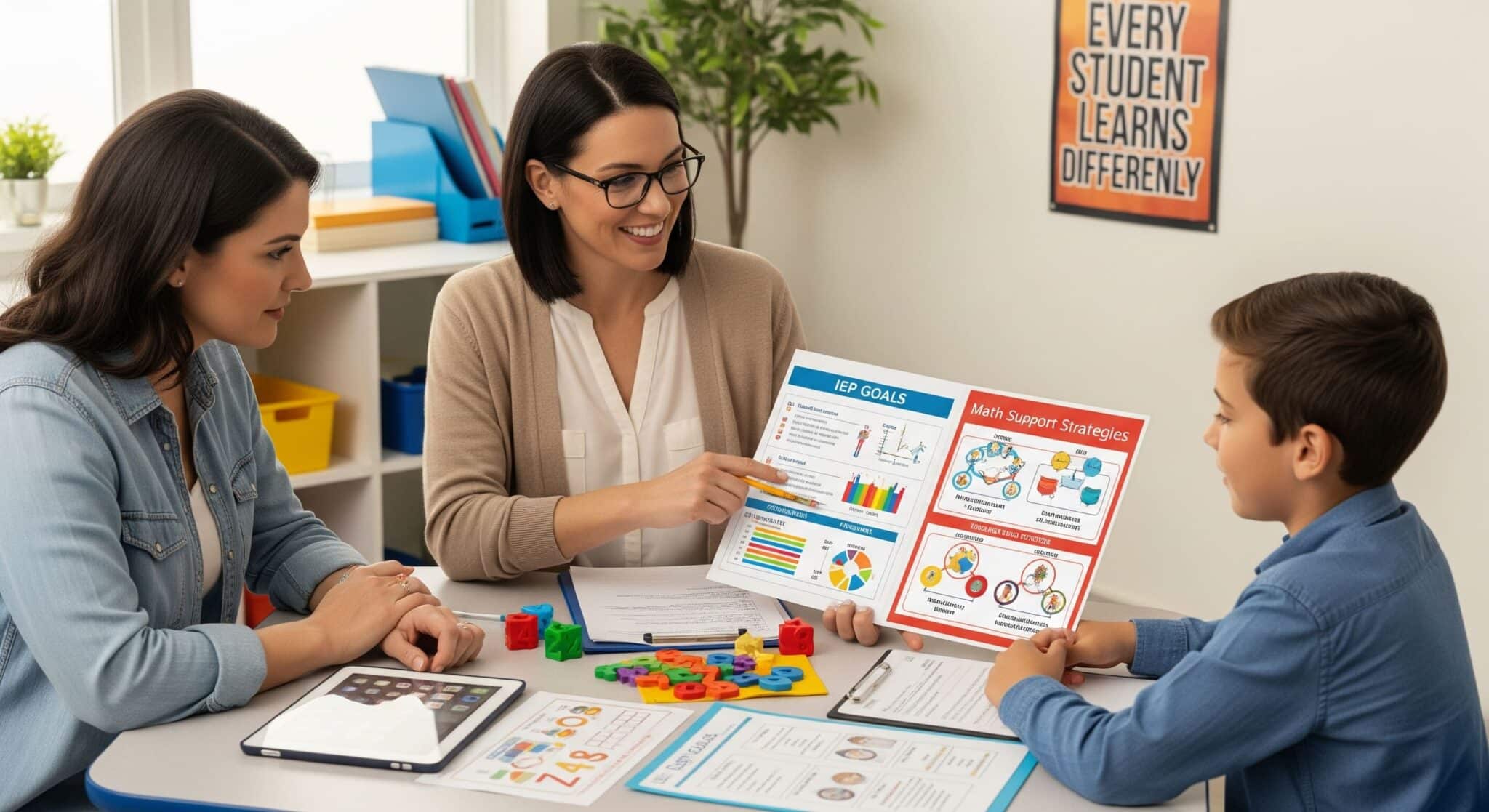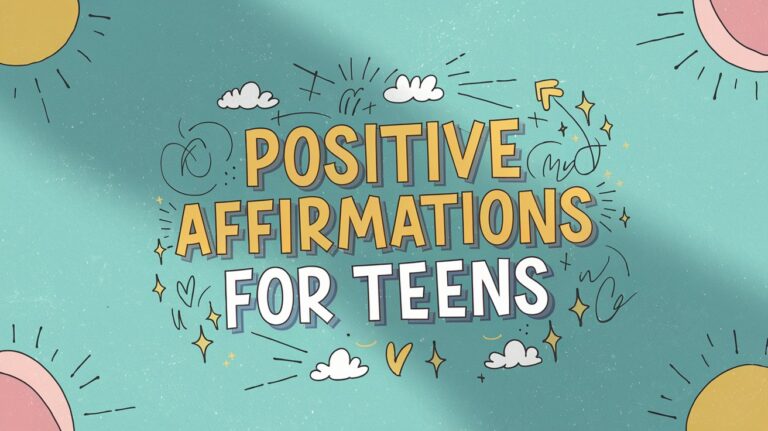What does dyscalculia look like? Dyscalculia is a real and often misunderstood learning disability that makes math feel confusing and frustrating.
It’s not about being lazy or just having “math anxiety”; it’s a brain-based challenge that affects how someone understands numbers, time, and even simple math like addition or counting change.
For kids and adults alike, it can make everyday tasks harder than they should be. If you’re a parent, teacher, or student, recognizing the signs of dyscalculia is the first step toward support.
In this blog, we’ll look into what dyscalculia looks like, its causes, diagnosis, and, most importantly, how to help.
Everyone deserves a chance to feel capable of numbers, and understanding is where that begins.
What is Dyscalculia?
Dyscalculia is a brain-based learning difference that makes it hard to understand numbers and math. It’s not about being lazy or simply “bad at math”; it’s a real neurodevelopmental condition.
People with dyscalculia may struggle with counting, telling time, estimating amounts, or recalling simple math facts. They often mix up number sequences or take longer to solve problems.
These challenges don’t reflect intelligence; they process numbers differently. Studies show 3–7% of the population may have dyscalculia, yet many remain undiagnosed.
Early support is key. With the right tools, strategies, and encouragement, individuals with dyscalculia can develop confidence and achieve success.
They might even uncover new ways to enjoy math through hands-on learning, visuals, or tech-based practice.
Understanding Dyscalculia: Causes and Risk Factors
What does dyscalculia look like? Dyscalculia is a specific learning disability that affects a person’s ability to understand and work with numbers, much like dyslexia impacts reading.
It’s not due to low intelligence but a mix of genetic, neurological, and environmental factors.
Neurological Differences:
Dyscalculia is linked to differences in brain areas crucial for numerical processing, especially the parietal lobe (specifically the intraparietal sulcus).
Individuals with dyscalculia often have impaired “number sense,” difficulty grasping numerical quantities. This can also involve issues with brain connectivity and deficits in working memory and executive functions, which are vital for math.
Genetic Factors:
Genetics play a strong role, as dyscalculia often runs in families. Studies show a higher chance of close relatives having the condition. Specific chromosomes (like 6 and 15) and certain genetic syndromes can also be linked to it.
Environmental and Other Risk Factors:
While not primary causes, certain factors can contribute. These include prenatal exposure to substances like alcohol, birth complications (e.g., prematurity), and a lack of early math exposure.
Dyscalculia frequently co-occurs with other learning disabilities such as dyslexia, ADHD, and dyspraxia.
Early identification and intervention are key to helping individuals with dyscalculia develop strategies to manage their challenges and succeed.
Recognizing the Signs: What Does Dyscalculia Look Like
Dyscalculia doesn’t always wave a red flag. It can appear subtly, sometimes being mistaken for carelessness or a lack of interest in math.
But underneath, it’s a real struggle with numbers, patterns, and quantity. Whether in the classroom or in everyday life, recognizing the signs early can help children and adults get the support they need to succeed.
Signs to Look for In Children

In young children, dyscalculia often becomes apparent when they first begin working with numbers. You might notice they’re falling behind in counting or having trouble with concepts that their peers easily grasp.
Major Signs:
- Trouble learning to count or recognize numbers.
- Difficulty understanding concepts like “more than” or “less than.”
- Struggles with basic math operations such as addition and subtraction.
- Trouble telling time or remembering sequences (days, months).
These early challenges aren’t just a phase; they could be key indicators of dyscalculia. Spotting them early gives kids a better shot at targeted help and improved confidence.
Key Signs In Teens and Adults

As kids grow, the signs of dyscalculia often shift from basic counting to real-world math difficulties. Many teens and adults may not even realize they’ve got it; they’ve learned to work around numbers or avoid them altogether.
Major Signs:
- Frequent errors in simple calculations.
- Avoiding tasks that involve numbers (like splitting a bill).
- Struggles with managing time, reading charts, or estimating distances.
- Anxiety when faced with math-related tasks or tests.
For teens and adults, the effects of dyscalculia can impact daily life and self-esteem. Recognizing these signs can open the door to practical coping strategies and renewed confidence.
Real-Life Example: A student might understand a story perfectly in reading class but completely freeze when asked to count objects or solve simple math problems. They may need to use fingers or a calculator even for basic addition.
Advantages of Understanding Dyscalculia
Recognizing and understanding dyscalculia benefits not only the person who has it but also positively impacts everyone involved in their support system.
From teachers and parents to classmates and peers, increased awareness leads to better outcomes, stronger connections, and a more inclusive approach to learning.
Here are some key advantages of understanding dyscalculia and why it matters
- Promotes early diagnosis and intervention.
- It helps reduce student frustration and emotional stress.
- Empower teachers to provide targeted support.
- Builds greater empathy and inclusion in classrooms.
- Enables families to advocate for adequate accommodations.
Understanding dyscalculia makes a real difference in someone’s learning life.
Treatment and Support Strategies
While there’s no cure for dyscalculia, early intervention, and specific teaching methods can seriously improve math skills and confidence.
Helping someone with dyscalculia begins with the right approach, one that’s patient, practical, and suited to their learning style.
1. Multisensory Instruction

Multisensory instruction engages multiple senses to help students understand math concepts.
This approach utilizes visual aids, such as charts, hands-on tools like counting blocks or beads, and auditory elements, including spoken instructions or songs.
By involving sight, touch, and sound, it creates a more effective and engaging learning experience for students.
2. Technology Support

Technology support offers fun, interactive ways to practice math through educational apps and software.
These tools use games, visual puzzles, and real-time feedback to build number sense and problem-solving skills.
They make learning less intimidating and more engaging, especially for students who struggle with traditional math instruction.
3. Individualized Education Plans (IEPs)

Individualized Education Plans (IEPs) provide personalized learning goals designed to meet a student’s unique needs. For those with dyscalculia, IEPs include specific strategies, accommodations, and support services.
These plans ensure students receive consistent, targeted instruction that builds on their strengths and helps them overcome math challenges at their own pace.
4. Real-World Math

Real-world math makes learning more relatable by incorporating everyday activities, such as cooking, shopping, and playing games, to teach concepts.
This hands-on approach helps individuals with dyscalculia connect numbers to practical tasks, building understanding and confidence while showing that math exists beyond textbooks and classrooms in fun, meaningful ways.
Teachers and parents should focus on progress, not perfection, and provide encouragement and praise for effort.
Living with Dyscalculia: Coping and Growing
Living with dyscalculia can be challenging, but many people learn to adapt and thrive by using practical coping strategies. Instead of trying to force traditional methods, they find what works best for them in daily life.
For example, using calculators or math apps helps alleviate the pressure when performing everyday tasks like shopping or budgeting.
Visual schedules, reminders, and timers can make time management easier. Breaking down math problems into smaller, manageable steps can reduce overwhelm and boost confidence.
For those who feel anxious around numbers, practicing mindfulness and stress-relief techniques can make a significant difference.
With the right tools and support, people with dyscalculia can build confidence and lead successful, empowered lives.
Success Stories: Adults with dyscalculia have gone on to become artists, writers, entrepreneurs, and more. With support and self-awareness, they’ve turned their unique learning styles into strengths.
Wrapping it Up
Understanding what does dyscalculia look like helps with early recognition and the right support, individuals can develop confidence and achieve success.
Whether it’s through thoughtful teaching, assistive tools, or emotional encouragement, support makes a big difference.
Understanding that dyscalculia is not a reflection of intelligence helps remove stigma and empowers students to find learning methods that work for them.
Parents, teachers, and peers play a key role in helping individuals feel seen and supported. With patience and the right strategies, those with dyscalculia can thrive in school and life.
Everyone learns differently, and every learning style deserves respect and understanding.


















